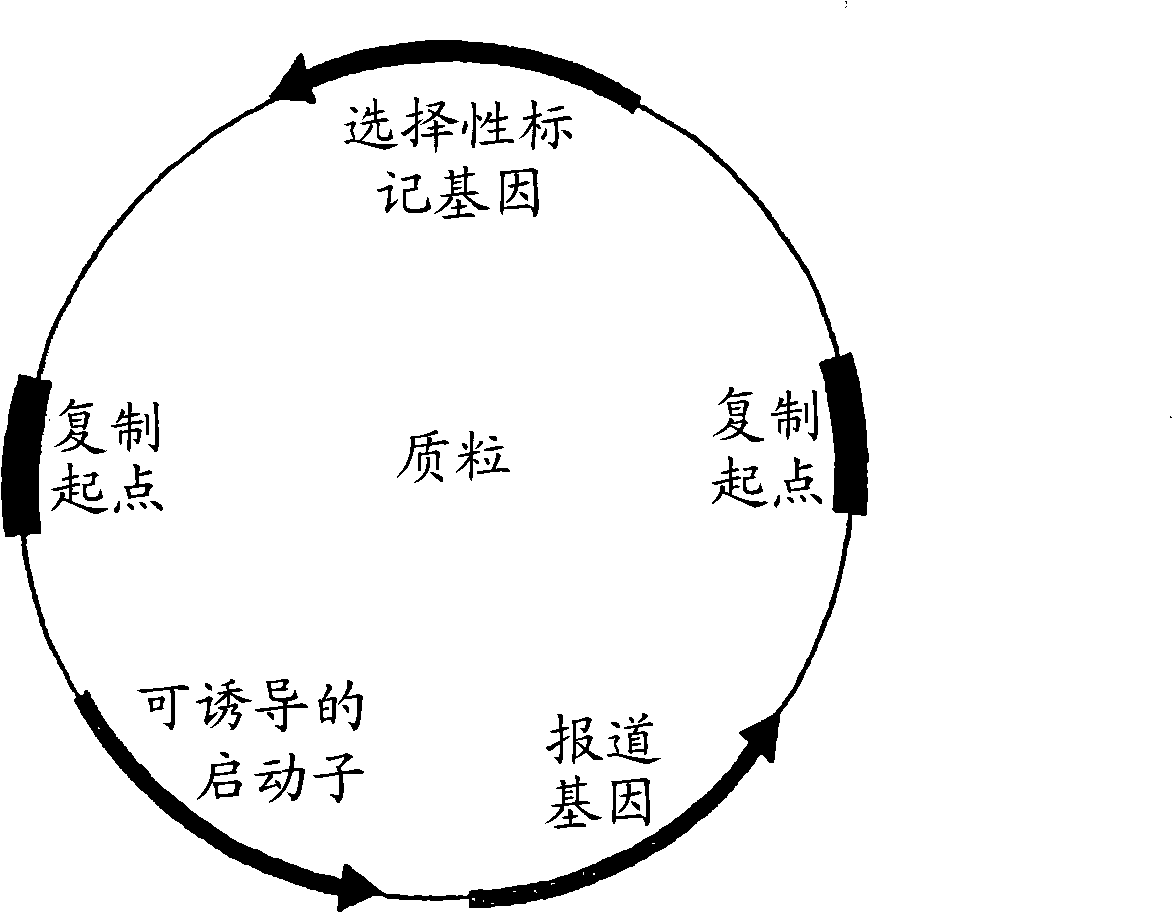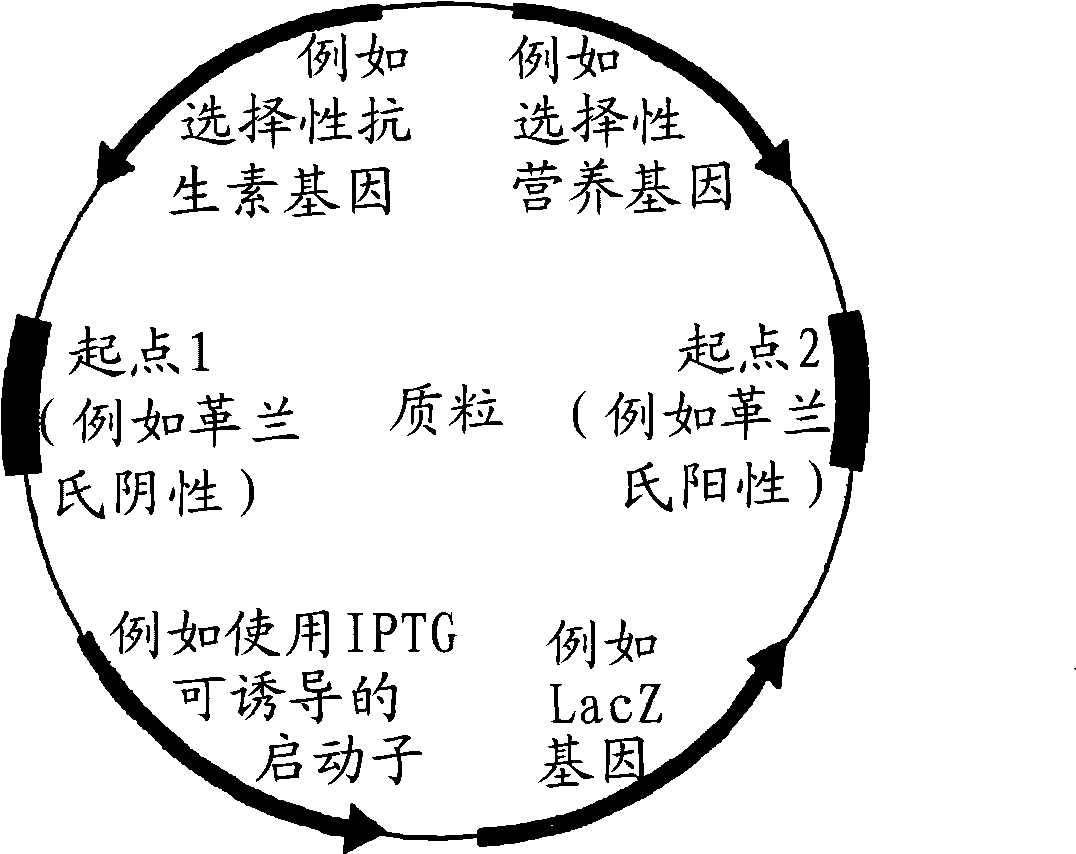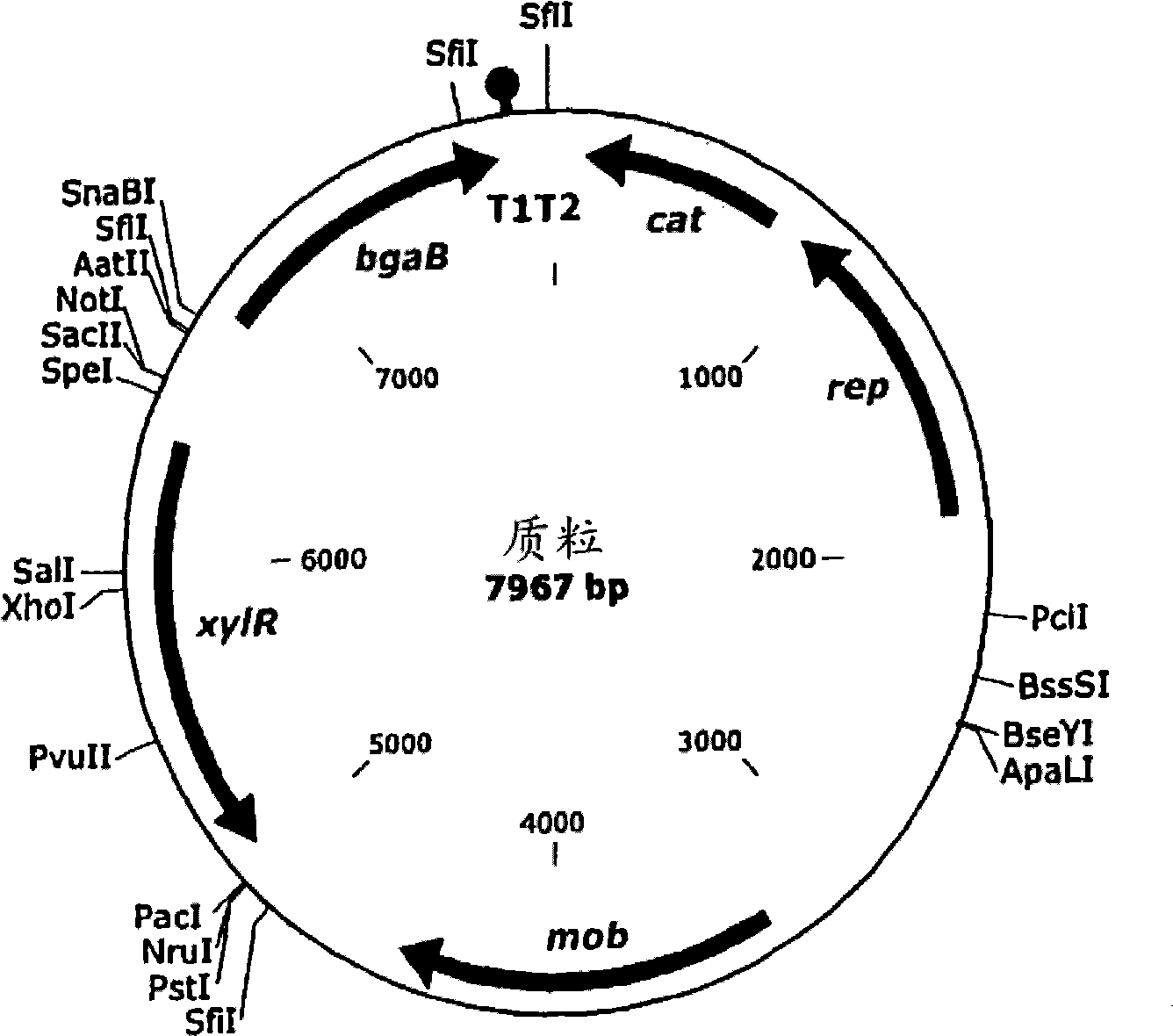Genetically engineered biological indicator
A biological indicator, genetic engineering technology, applied in the field of genetic engineering biological indicators, can solve problems such as impracticality
- Summary
- Abstract
- Description
- Claims
- Application Information
AI Technical Summary
Problems solved by technology
Method used
Image
Examples
Embodiment 1
[0156] Figure 4 The plasmid described in was constructed by restriction digestion of the base plasmid and ligation of the xylR regulator fragment to the base plasmid. After confirming the correct ligation of the xylR regulator to the base fragment, the process was repeated for the bgaB gene fragment and terminators T1 and T2 for this gene. When the genetic elements are fully assembled and proper assembly and orientation are confirmed, the plasmid is inserted into the host organism and may be referred to as plasmid #1.
Embodiment 2
[0158] Plasmids can be internalized using transformation techniques in host organisms using several methods. These methods may include protoplasts, electroporation, ballistic methods, induction of competence, transduction or chemical methods (calcium chloride). For this example, competent E. coli were transformed by chemical transformation methods. E. coli lacking any restriction system was stored at -70°C. Thaw E. coli on ice and mix. E. coli was exposed to plasmid #1 for 30 minutes on ice. The resulting E. coli / plasmid mixture was heat-shocked at 42°C for 30 seconds and transferred to an ice bath for 2 minutes. Warm medium was then added to the E. coli / plasmid mixture and incubated at 37°C for 60 minutes. Place samples on agar plates containing antibiotics and X-gal. Clones appearing blue were successfully transformed.
Embodiment 3
[0160] Bacillus subtilis was grown overnight in LB broth containing 0.5M sorbitol, washed three times in 10 wt% glycerol with 0.5M sorbitol and 0.5M mannitol, and allowed to grow in the presence of plasmid #1 subjected to electroporation. Electroporation was performed via a range of voltages (1800-2500V). Resulting organisms were recovered in medium (LB broth medium with 0.5M sorbitol and 0.5M mannitol) and recovered for three hours at 37°C. After recovery, organisms were plated on LB agar plates containing antibiotics for selection of transformed organisms and incubated at 37°C. Clones exhibiting growth were plated on LB agar plates containing inducer (2 wt% xylose), selectable marker (chloramphenicol at 5 mg / mL), and X-gal (80 mg / mL). Colonies that appeared blue on these agar plates were successfully transformed.
[0161] The transformed Bacillus subtilis was sporulated using the method described below. Spread an aliquot of vegetative Bacillus subtilis on an agar plate. ...
PUM
| Property | Measurement | Unit |
|---|---|---|
| length | aaaaa | aaaaa |
Abstract
Description
Claims
Application Information
 Login to View More
Login to View More - R&D
- Intellectual Property
- Life Sciences
- Materials
- Tech Scout
- Unparalleled Data Quality
- Higher Quality Content
- 60% Fewer Hallucinations
Browse by: Latest US Patents, China's latest patents, Technical Efficacy Thesaurus, Application Domain, Technology Topic, Popular Technical Reports.
© 2025 PatSnap. All rights reserved.Legal|Privacy policy|Modern Slavery Act Transparency Statement|Sitemap|About US| Contact US: help@patsnap.com



